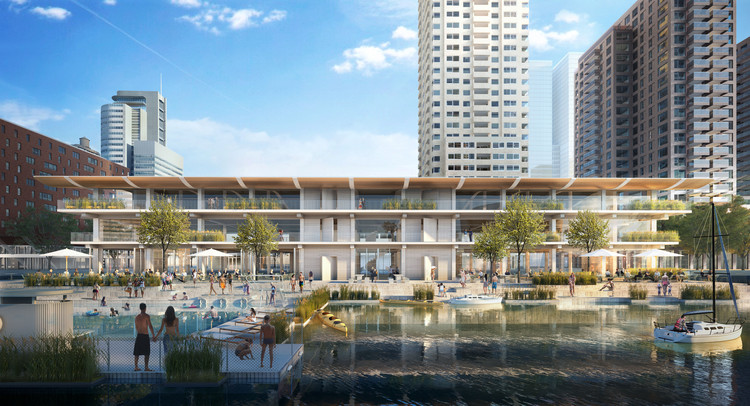In Brazil, the offshore oil mining industry is expanding. Unfortunately for oil companies though, it's expanding away from the coast, as new oil deposits are found further and further from land - so far, in fact, that they're outside the range of the helicopters that usually transport workers to and from the rigs. That's why Rice University students took on the challenge of designing "Drift & Drive," a floating community where workers and their families could stay for extended periods of time, eliminating the inconvenience of the usual "two weeks on, two weeks off" cycle.
The project won the Odebrecht Award last year, and now one of the largest petrochemical companies in Brazil, Petrobras, is working on a plan to implement elements of the design.
Read on after the break for more about how the project functions
























